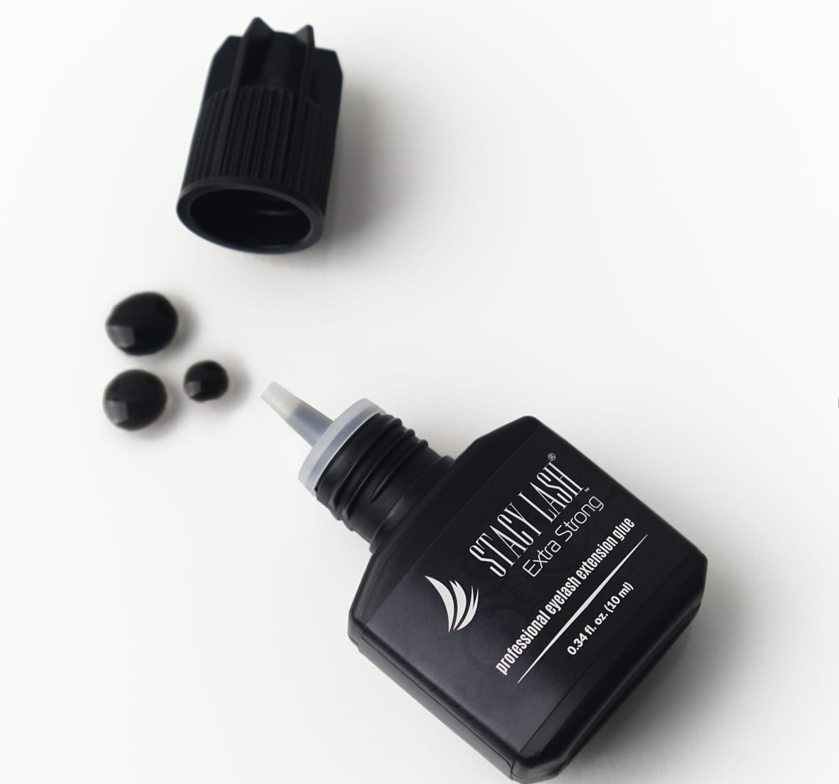Why is Lash Glue Retention Crucial?
For every lash artist, the success of an eyelash extension application is not just about the artistry or lash mapping — it hinges on one critical factor: retention. How long the extensions stay on depends heavily on the lash glue, its formulation, and how it’s handled during application. Poor retention not only impacts client satisfaction but can also hurt your professional reputation. Understanding the science behind lash glue, including its ingredients and behavior under different conditions, is essential for achieving optimal results and becoming a master in your craft.
Key Ingredients in Lash Glue: What Makes It Stick?
At the heart of every long-lasting lash adhesive is a complex chemical formula designed to create a strong yet flexible bond between the natural lash and the extension. The primary component in most professional lash glue is cyanoacrylate — a fast-acting adhesive known for its quick bonding capabilities and durability.
There are several types of cyanoacrylate used in lash glues, including:
- Ethyl cyanoacrylate: Most common, fast drying, strong hold.
- Butyl cyanoacrylate: Gentler, suitable for sensitive clients, slower drying.
- Alkoxy cyanoacrylate: Less irritating, more resistant to moisture and heat, but slower setting.
Other lash glue ingredients may include stabilizers to extend shelf life, thickening agents for texture, and pigments for color (black or clear). Some advanced formulas also contain elasticity enhancers, which help the bond withstand daily movement and stress, significantly improving eyelash extension retention.
See also: Life After Bariatric Surgery: Diet, Exercise, and Lifestyle Changes
How Humidity and Temperature Affect Adhesion
Humidity and lash glue are closely linked — in fact, they can make or break your retention. Cyanoacrylate requires moisture to cure. When humidity is within the ideal range (typically 45–60% for most glues), the adhesive polymerizes correctly, forming a tight and long-lasting bond.
However, if humidity is too high, the glue may cure too quickly, creating weak, brittle bonds that result in poor retention. On the other hand, if the environment is too dry, the glue cures too slowly, increasing the risk of stickies, lash shift, or even extensions falling off during application.
Temperature also plays a critical role. Most best professional lash glue formulas perform best at room temperatures between 20–24°C (68–75°F). Higher temperatures accelerate curing, while colder temperatures slow it down. As a professional, you should always monitor your lash room with a hygrometer and thermometer and adjust your adhesive choice accordingly.
Different Types of Lash Glue: For Beginners vs. Professionals
Not all lash adhesives are created equal, and choosing the right glue depends on your speed, experience, and your client’s needs. For example:
Beginner-friendly glues have slower drying times (4–6 seconds), giving new lash artists more flexibility during placement. These glues are usually formulated with butyl cyanoacrylate for reduced irritation and easier control.
Professional glues, on the other hand, dry much faster — typically within 0.3–1 second. They require precision and confidence in placement. These adhesives often feature ethyl cyanoacrylate and are optimized for advanced artists who need speed and long retention.
Some artists prefer a clear glue for colored or brown lash sets or for clients with sensitivities, while others stick to black adhesives for a darker, mascara-like effect. Selecting the best professional lash glue is a matter of matching the product’s characteristics with your skill level and the client’s individual lash profile.
Tips to Extend Lash Glue Retention
Even with the best glue in your arsenal, retention will suffer if proper protocols aren’t followed. Here are essential tips to get the most out of your adhesive:
Prep lashes thoroughly: Oil, dirt, or leftover makeup will interfere with adhesion. Use a professional lash cleanser and primer to ensure a clean surface.
Control humidity and temperature: As discussed earlier, maintaining a stable environment is key. Use a humidifier or dehumidifier when needed.
Use fresh glue: Once opened, lash glue has a limited life — generally 4 to 6 weeks. Always shake the bottle before use and store it in a controlled environment.
Replace glue drops frequently: Every 15–20 minutes, refresh your glue drop to maintain optimal consistency.
Avoid excess adhesive: Using too much glue can result in poor bonding and lash clumping. Dip only 1–2 mm of the extension base into the adhesive.
Educate your clients on aftercare: No swimming, steam, or oil-based products in the first 24–48 hours. Also, advise them to avoid rubbing or pulling at their extensions.
Use a nano mister: A gentle mist of water helps initiate polymerization and reduce fumes, especially in low-humidity conditions.
Please warn your clients not to perform the procedure on themselves: Applying lash extensions at home is not only dangerous but also ineffective. They cannot maintain the correct angle, placement, or safety protocols, and the risk of eye injury, lash damage, or allergic reaction increases dramatically.
Conclusion
Lash glue may seem like a small component in the grand scheme of lash artistry, but its chemistry holds the key to eyelash extension retention and client satisfaction. By understanding the role of lash glue ingredients, the effects of humidity and lash glue interaction, and choosing the best professional lash glue for your working environment and skill level, you’re setting yourself — and your clients — up for success. As professionals, continuing to deepen our technical knowledge allows us to deliver better, safer, and longer-lasting results.
Mastering lash glue isn’t just about picking the “strongest” product — it’s about mastering the science behind it.




